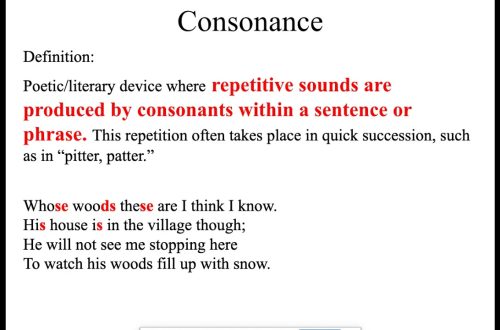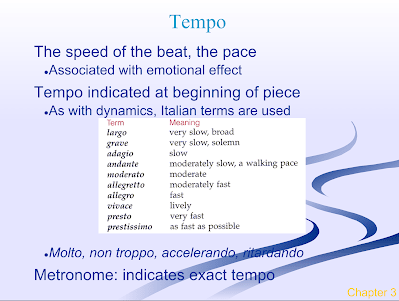
Tempos in music: slow, moderate and fast
Contents
The classic definition is that tempo in music is the speed of movement. But what is meant by this? The fact is that music has its own unit of measurement of time. These are not seconds, as in physics, and not hours and minutes, which we are used to in life.
Musical time most of all resembles the beating of a human heart, measured pulse beats. These beats measure the time. And just how fast or slow they are depends on the pace, that is, the overall speed of movement.
When we listen to music, we do not hear this pulsation, unless, of course, it is specifically indicated by percussion instruments. But every musician secretly, inside himself, necessarily feels these pulses, they help to play or sing rhythmically, without deviating from the main tempo.
Here’s an example for you. Everyone knows the melody of the New Year’s song “A Christmas tree was born in the forest.” In this melody, the movement of the musical rhythm is mainly in eighth note durations (sometimes there are others). At the same time, the pulse beats, it’s just that you can’t hear it, but we will specially voice it with the help of a percussion instrument. Listen to this example and you will begin to feel the pulse in this song:
What are the tempos in music?
All tempos that exist in music can be divided into three main groups: slow, moderate (that is, medium) and fast. In musical notation, tempo is usually denoted by special terms, most of which are words of Italian origin.
So slow tempos include Largo and Lento, as well as Adagio and Grave.
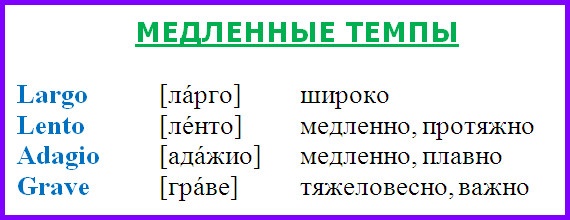
Moderate tempos include Andante and its derivative Andantino, as well as Moderato, Sostenuto and Allegretto.
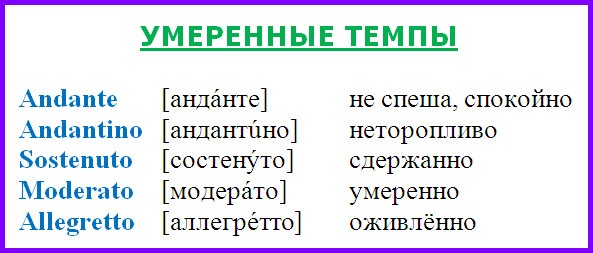
Finally, let’s list the fast paces, these are: the cheerful Allegro, the “live” Vivo and Vivace, as well as the fast Presto and the fastest Prestissimo.
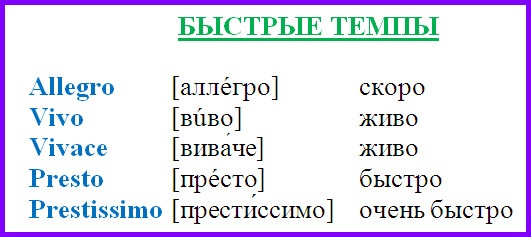
How to set the exact tempo?
Is it possible to measure musical tempo in seconds? It turns out you can. For this, a special device is used – a metronome. The inventor of the mechanical metronome is the German physicist and musician Johann Mölzel. Today, musicians in their daily rehearsals use both mechanical metronomes and electronic analogues – in the form of a separate device or an application on the phone.
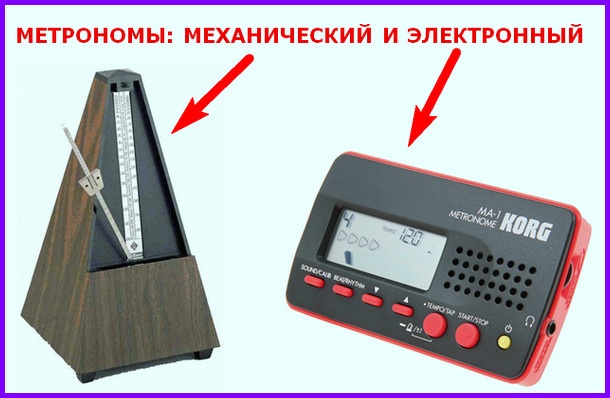
What is the principle of the metronome? This device, after special settings (move the weight on the scale), beats the beats of the pulse at a certain speed (for example, 80 beats per minute or 120 beats per minute, etc.).
The clicks of a metronome are like the loud ticking of a clock. This or that beat frequency of these beats corresponds to one of the musical tempos. For example, for a fast Allegro tempo, the frequency will be about 120-132 beats per minute, and for a slow Adagio tempo, about 60 beats per minute.
Depending on the time signature, you can also set up the metronome so that it marks strong beats with special signs (a bell, for example).
Each composer determines the tempo of his work in different ways: some indicate it only approximately, in one term, others set the exact values according to the metronome.
In the second case, it usually looks like this: where the tempo indication should be (or next to it), there is a quarter note (pulse beat), then an equal sign and the number of beats per minute according to Mälzel’s metronome. An example can be seen in the picture.
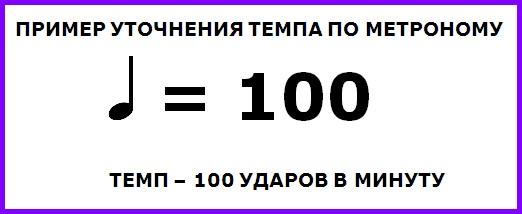
Table of rates, their designations and values
The following table will summarize data on the main slow, moderate and fast tempos: Italian spelling, pronunciation and translation into Russian, approximate (about 60, about 120, etc.) metronome beats per minute.
| Pace | Transcription | Transfer | Metronome |
| Slow pace | |||
| Long | largo | wide | OK. 45 |
| Slow | lento | drawn out | OK. 52 |
| Adagio | adagio | slow | OK. 60 |
| Serious | grave | it’s important | OK. 40 |
| moderate pace | |||
| Walking | and then | leisurely | OK. 65 |
| Andantino | andantino | leisurely | OK. 70 |
| Supported | sostenuto | restrainedly | OK. 75 |
| Moderate | moderately | moderately | OK. 80 |
| Allegretto | allegretto | movably | OK. 100 |
| fast paced | |||
| Allegro | allegro | soon | OK. 132 |
| Living | vivo | lively | OK. 140 |
| Perennial | vivace | lively | OK. 160 |
| Presto | presto | fast | OK. 180 |
| Very soon | prestissimo | very fast | OK. 208 |
Slowing down and speeding up the tempo of a piece
As a rule, the tempo taken at the beginning of the work is preserved until its end. But often in music there are such moments when slowing down or, conversely, speeding up the movement is required. There are also special terms for such “shades” of movement: accelerando, stringendo, stretto and animando (all for acceleration), as well as ritenuto, ritardando, rallentando and allargando (these are for slowing down).
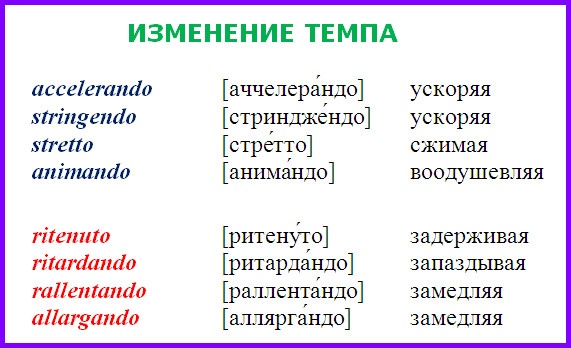
Shades are more commonly used to slow down at the end of a piece, especially in early music. Gradual or sudden acceleration of the tempo is more characteristic of romantic music.
Refinement of musical tempos
Often in notes, next to the main designation of the tempo, there is one or more additional words that clarify the nature of the desired movement or the nature of the musical work as a whole.
For example, Allegro molto: allegro is just fast, and allegro molto is very fast. Other examples: Allegro ma non troppo (quickly, but not too fast) or Allegro con brio (Quickly, with fire).
The meaning of such additional designations can always be found with the help of special dictionaries of foreign musical terms. However, you can see the most frequently used terms in a special cheat sheet that we have prepared for you. You can print it out and always have it with you.
Cheat-sheet of rates and additional terms – DOWNLOAD
These are the main points regarding the musical tempo, we wanted to convey to you. If you still have questions, please write them in the comments. See you again.



